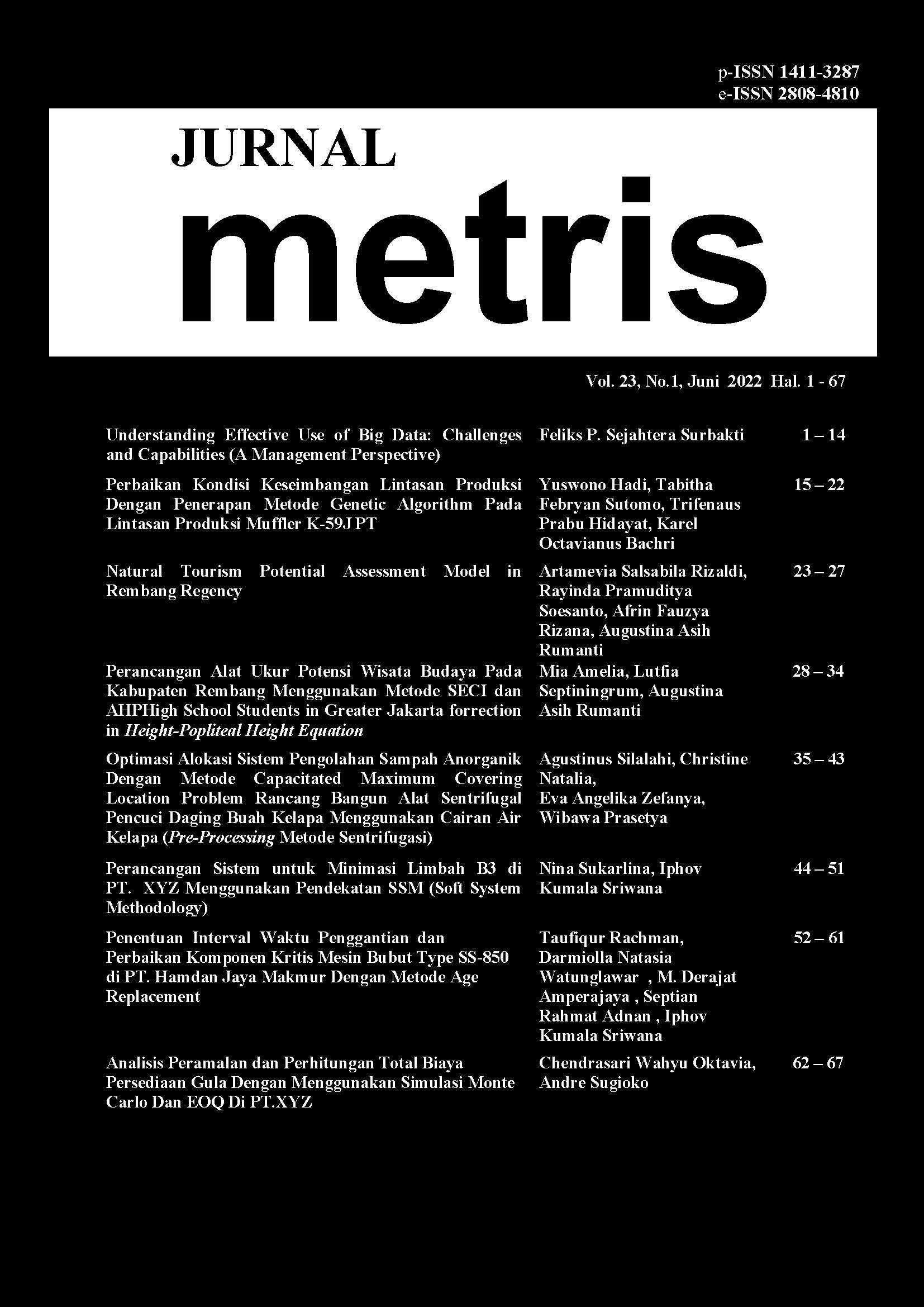OPTIMASI ALOKASI SISTEM PENGOLAHAN SAMPAH ANORGANIK DENGAN METODE CAPACITATED MAXIMUM COVERING LOCATION PROBLEM
DOI:
https://doi.org/10.25170/metris.v23i01.3224Keywords:
Capacitated Maximum Covering Location Problem, Parameter Jarak, Mix Integer Programming, Branch and BoundAbstract
Province X in Indonesia has a significant problem with trash that has been
challenging to address. The Environment Agency therefore desires to construct
an inorganic Trash Management System. The Environment Agency has four
potential locations with various capacities. The purpose of this research is to
locate a trash treatment system's best possible site and allocate each TPS that is
less than 30 km and more over 30 km from the chosen system, respectively, to
ensure that the overall distance traveled is as little as possible. There are four
possible locations, and it required to select three of them. This study use the
LINGO 18.0 software to solve the Capacitated Maximum Covering Location
Problem (CMCLP) approach. Distance parameters used by CMCLP are split
into two stages. The first stage is to determine the location of the trash treatment
system to be built and the allocation of trash and the amount of trash from each
TPS using Mix Integer Programming. B is not chosen out of the options, which
are A, B, C, and D. System A will receive 1,407,520 tons of trash totaling 24
TPS. System C receives trash from 147 TPS weighing 1,294,495 pounds.
System D will receive trash weighing 819,142 tons from 88 TPS. The allocation
of trash from TPS that are more than 30 km away takes place in the second stage.
Three TPS are assigned to System A, and seven TPS are assigned to System D.











